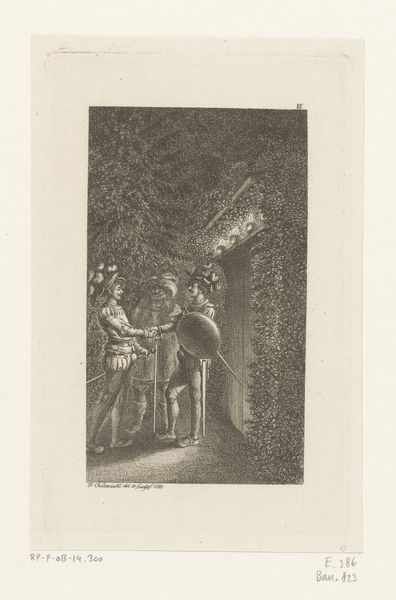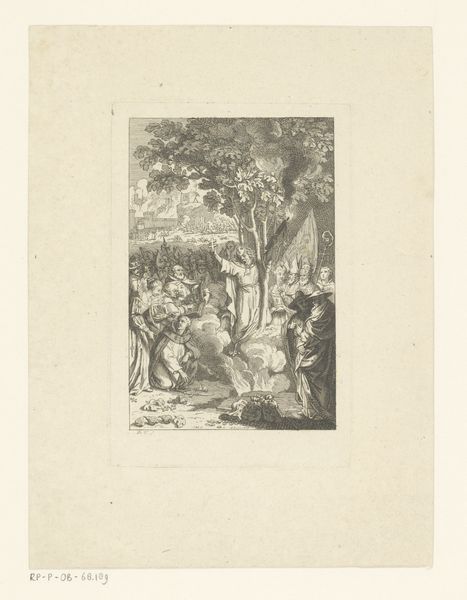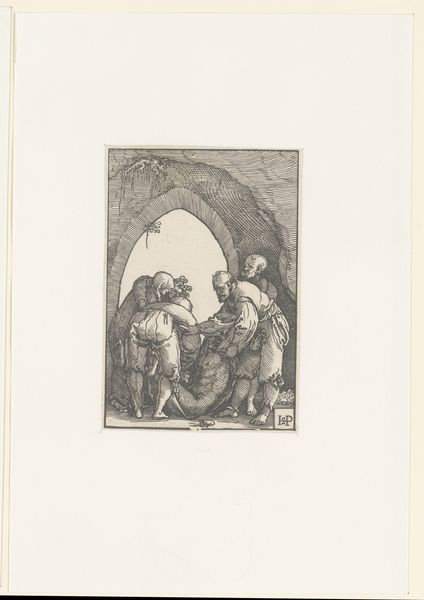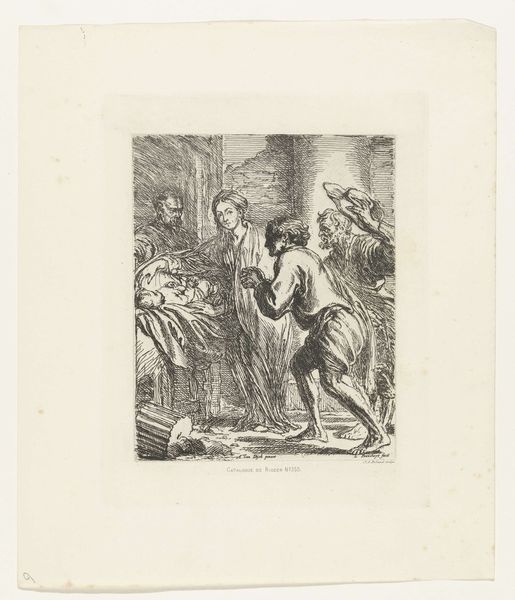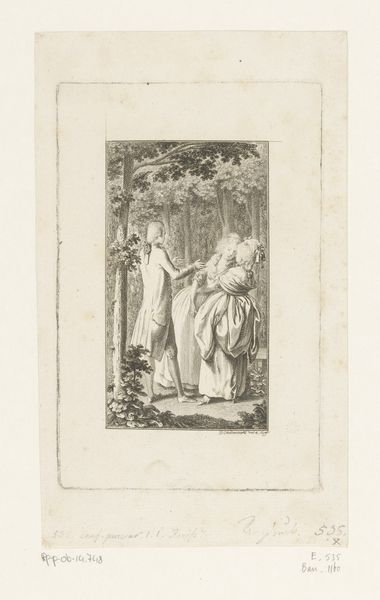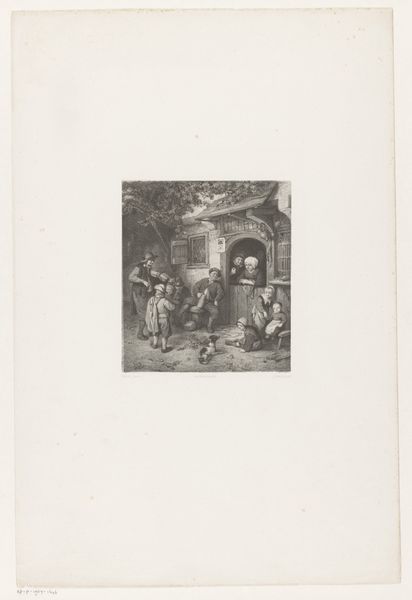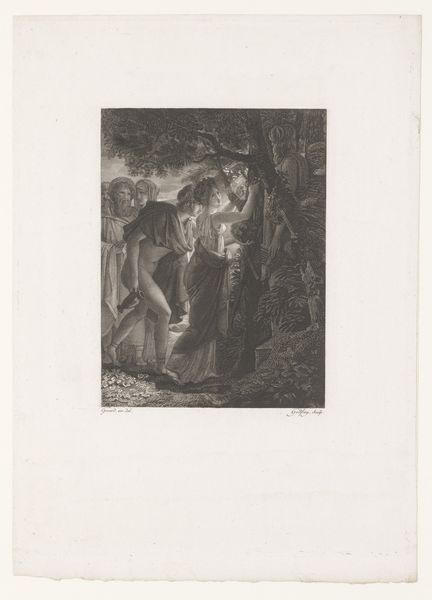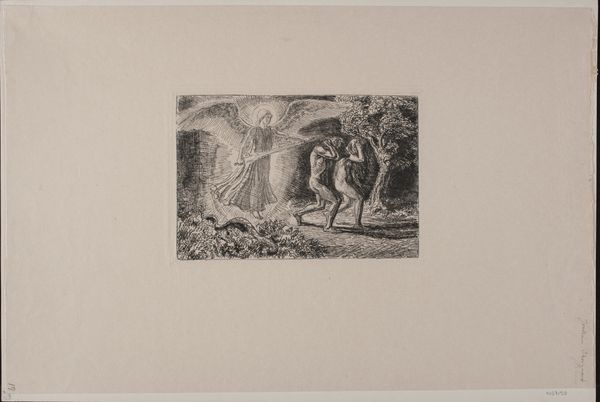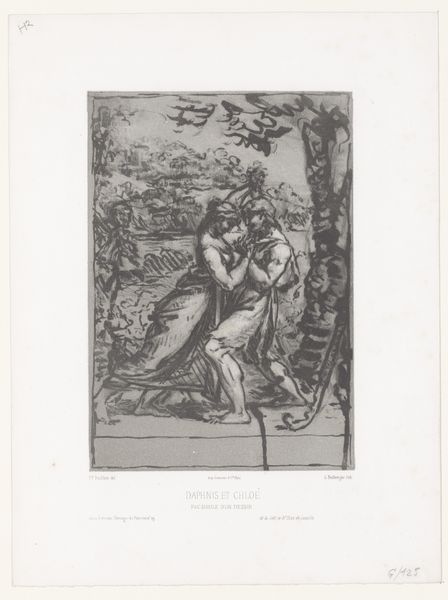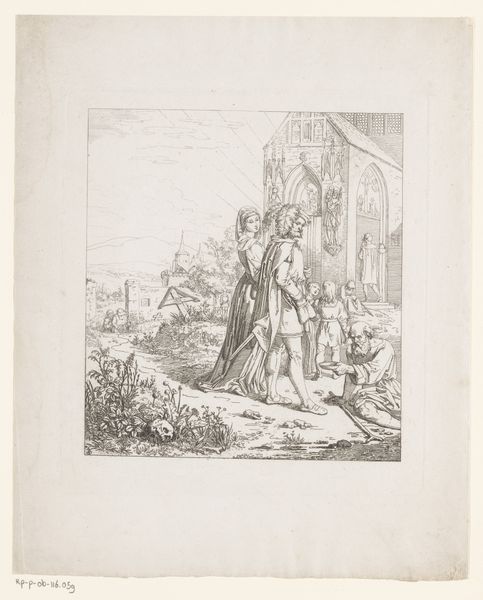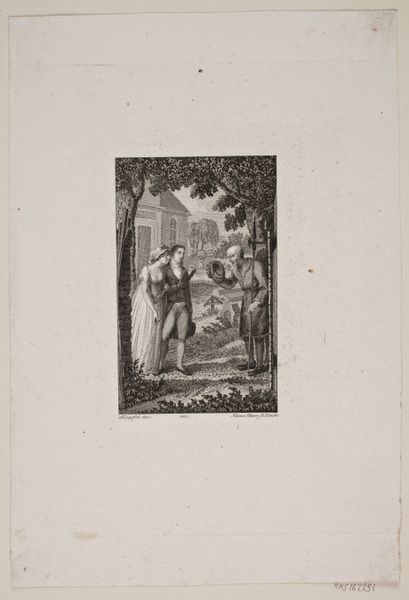
print, engraving
# print
#
old engraving style
#
mannerism
#
figuration
#
personal sketchbook
#
history-painting
#
engraving
Dimensions: height 288 mm, width 206 mm
Copyright: Rijks Museum: Open Domain
Curator: We're now looking at "Noli me tangere," an engraving made in 1586 by Julius Goltzius, housed here at the Rijksmuseum. Editor: It’s quite stark, really. The figures feel isolated despite being close, and the landscape behind them has this otherworldly quality, enhanced by the etching style. The dark lines contrast dramatically with the white of the paper. Curator: "Noli me tangere," Latin for "touch me not," depicts the encounter between Mary Magdalene and the resurrected Christ. Goltzius's masterful use of line emphasizes the emotional tension – Magdalene's surprise and almost desperate reaching out compared with Christ’s gentle yet firm rejection. Consider how the symbols such as the gardening tool signify not merely Christ's disguise but also his restoration of paradise. Editor: The textures here are amazing for an engraving! Look at Christ's robe; Goltzius somehow communicates its weight and fall through just a few cleverly placed lines. What kind of labor would go into producing such refined detail across the entire printing plate? Was Goltzius's shop structured like other studios or was this print outsourced? Also, look at Mary's jar; the materials referenced must have meant something to viewers at the time. Curator: The scene itself carries immense cultural weight, having been represented countless times. But there's something distinctive in Goltzius’s Mannerist style. Notice how the bodies are elongated and somewhat theatrical, not to mention the allegorical implications. It reminds us of the changing relationship between the sacred and the human during the late Renaissance. The figures occupy a symbolic space, where transcendence meets earthly recognition. Editor: Exactly! These engravings served as incredibly important educational tools – not just in understanding Biblical stories but, in terms of craft, the dissemination of particular techniques for image-making and appreciation of print culture. It makes me think about the economies of image reproduction in the sixteenth century and beyond. Curator: Thinking about the layers of meaning and cultural associations within this seemingly simple encounter, and observing the gestures and compositional echoes that link to a deeper symbolic realm... I'm filled with renewed awe. Editor: Indeed, appreciating how prints could amplify artistic innovations to a larger public—as well as the socio-economic system that enabled such practices – has reshaped how I perceive "Noli me tangere" forever.
Comments
No comments
Be the first to comment and join the conversation on the ultimate creative platform.
